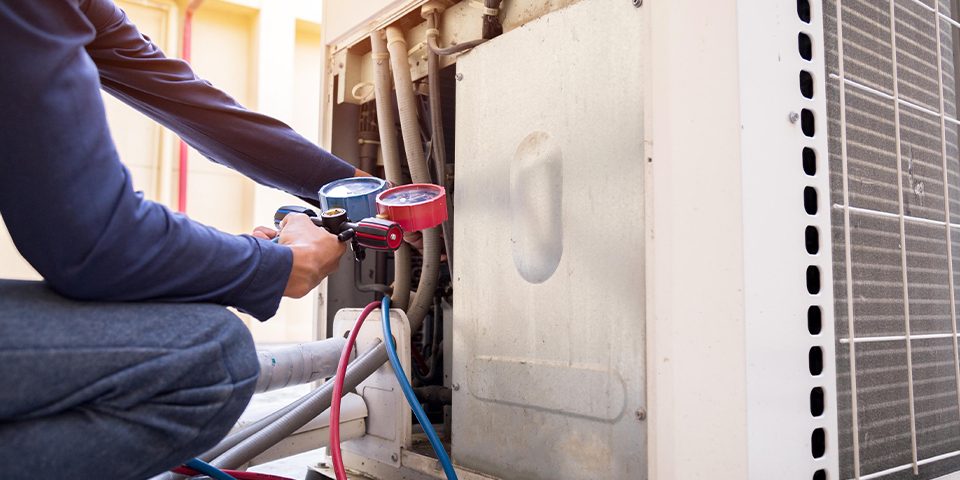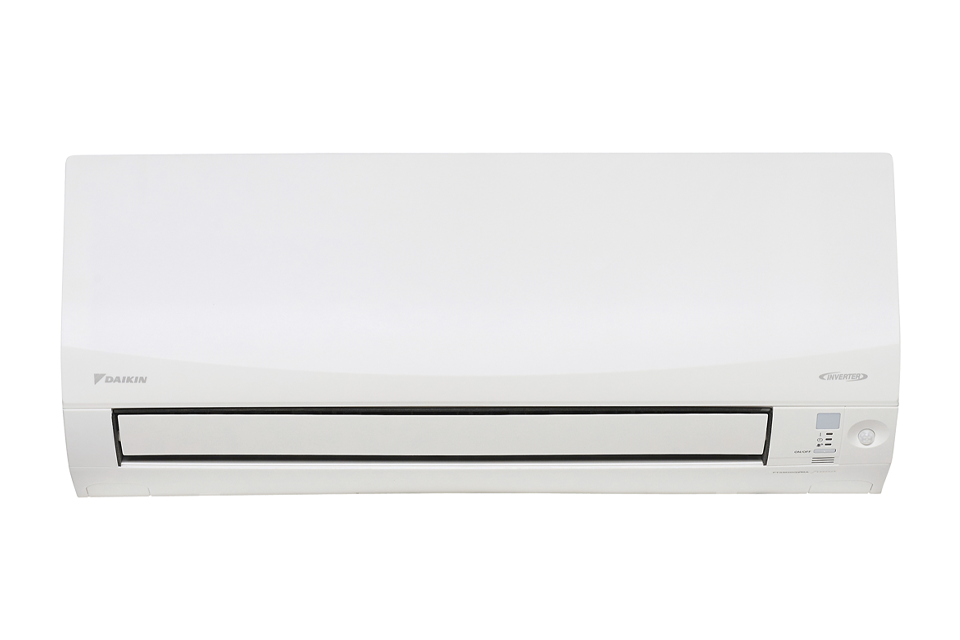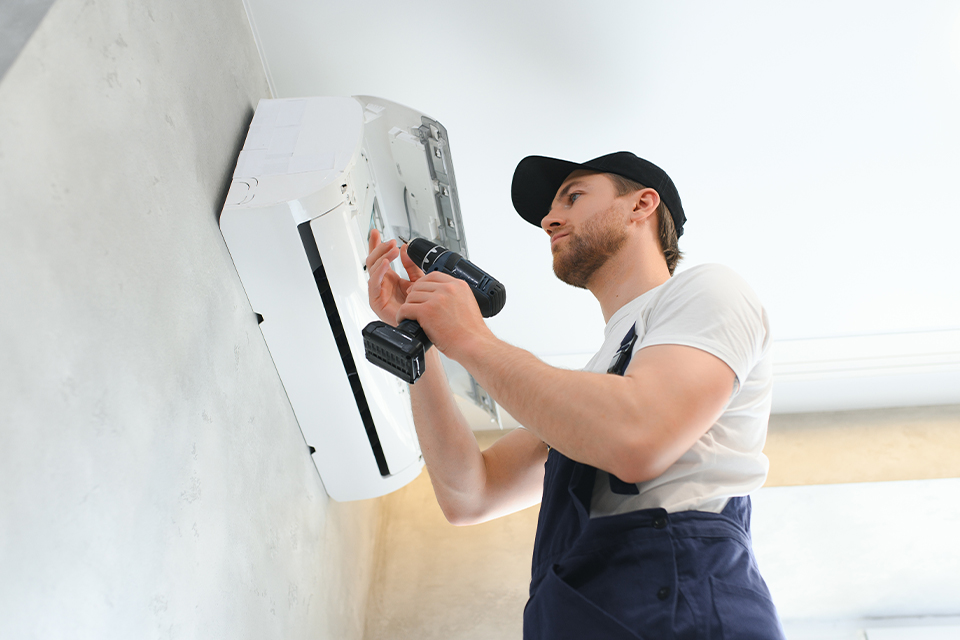
What Size Air Conditioner Do I Need?
July 18, 2025
Converting Gas Ducted Heating to Electric
August 18, 2025How Do Air Conditioners Work

While air conditioners work to cool an area, the science behind them is reliant on the transfer of heat. Every type of air conditioner operates on the same principle. Understanding how an air conditioner works is important as it allows you to make an informed decision about the type of air conditioner you might prefer. Air conditioners can improve your home’s comfort, save energy and reduce environmental impact. With the right knowledge of how they work and selecting an energy efficient unit, you can enjoy a cool home and reduced bills. Read on to discover the common principles of how air conditioners work, nuances between different air conditioners, and how cooling systems can work efficiently.
How Air Conditioners Work
Air conditioners all operate on the same basic premise, providing cold air inside the home by removing the heat and humidity from the indoor air. It then returns the cooler air to the interior of the home and transfers the unwanted heat and humidity outside. To understand the scientific process of how conditioners work we need to look at two different areas – the parts of an air conditioner and the cooling process.
The Parts of an Air Conditioner
To function properly and keep the system energy efficient, all air conditioners rely on a number of specific parts. These parts work in a coordinated and cyclical manner to cool a room.
- Refrigerant: This is the coolant liquid that is used to cool the air down.
- Air handler and blowing units: The air handler is the indoor unit responsible for transferring the cool air into the home, while the blowing unit is a fan in the air handler that forces the cool air through the ducts or vents.
- Evaporator coil: Evaporator coils are typically located inside the main part of the indoor unit, often attached to the furnace or inside the air handler. The aluminium or copper coil works to absorb the heat from indoor air which cools it down.
- Condenser coil: Condenser coils on the outdoor unit of the air conditioner have a main function to release the heat that was collected by the evaporator coil. Like an evaporator coil, a condenser coil consists of a network of tubes running vertically or horizontally within it, each containing finned aluminum coils.
- Compressor: The compressor is basically the engine of the air conditioner that converts the refrigerant to a high pressure gas.
- Expansion valve: An expansion valve is generally a small metal component with connections for refrigerant lines in an air conditioner. It is usually cylindrical or box shaped and is located near the evaporator inside the main part of the indoor unit. Expansion valves cool down the refrigerant liquid before passing it through the evaporator coils.
- Thermostat: The thermostat on an air conditioner usually appears as a wall mounted unit with a display that shows the current temperature and desired temperature setting. Thermostats are responsible for turning the air conditioner compressor and fan on and off. It allows you to manually or automatically set a specific temperature and the level of heating or cooling the air conditioner needs to produce.
- Filter: Air conditioning filters are usually rectangular pieces of material that trap dust, dirt and debris. They might be made of mesh or fibreglass and some are washable and disposable. The purpose of a filter is to keep contaminants and other particles from entering the home from outside. Filters trap and remove dirt and debris which allows only fresh air to enter the home.
Cooling Process of an Air Conditioner
- Program thermostat: The air conditioner cooling process begins by manually or automatically programming the desired temperature into the thermostat which is often a remote control or a panel on the wall. The thermostat senses the air temperature needs to be lowered and then sends a signal to the air conditioning system components inside and outside the house.
- Fan removes hot air: Once the signal is registered that the temperature needs to be lowered, the fan from the indoor unit pulls the hot air from the inside of the home through the air ducts. This hot air passes through the filter where dust and other particles are collected. This automatically makes the room less humid.
- Filtered air passes over evaporator coil: Once the air from inside the house has been filtered, it passes over the evaporator coil which absorbs the heat from the indoor air.
- Refrigerant absorption: When the air passes over the evaporator coil, heat from the air is transferred to the refrigerant inside the coils. This then alters the refrigerant from a liquid to a vapour. The warm refrigerant is then transferred to the compressor.
- Refrigerant compression: While the refrigerant has absorbed heat from the indoor air, it is still relatively cool. The vapourised gas then enters the compressor, which is located in the outside unit, to increase its pressure and temperature. The refrigerant temperature needs to be heated as it is the only way for it to expel heat from the indoor environment to the outdoors. The outdoor area must be a lower temperature than the refrigerant for heat transfer to occur.
- Refrigerant flows to condenser coils: On the outside unit, the refrigerant flows to the condenser coils where the heat is removed and released to the outdoor air.
- Cool refrigerant flows back indoors: The cool liquid refrigerant flows back indoors where it evaporates and cools the evaporator coil.
- Fan blows cold air into the room: A fan inside the indoor unit blows the now cooled air back into the room through the ductwork or vents, creating a cool environment.
How Reverse Cycle Air Conditioners Work To Heat
Reverse cycle air conditioners, also known as heat pumps, work by absorbing the heating energy present in the air. When in heat mode, the outdoor unit extracts heat from the outside air and transfers it to the indoor unit as a high-pressure gas. This gas passes through the condenser coils and then releases the heat into the room, and the cycle repeats.

How Different Types of Air Conditioners Work
While the basic principle of cooling applies to all air conditioners, some different types of air conditioners may operate slightly differently.
- Ducted: Ducted air conditioning units work by circulating air throughout the home via a series of ducts and vents. This system works by extracting heat from inside the room, processing it through a central unit and then distributing the cooled air back into the room via fans and vents. Ducted reverse cycle units both heat and cool using a refrigeration cycle. When heating a home, the system absorbs outside heat and releases it indoors. When cooling, the system draws the warm air from inside the house and passes it over the refrigerant back into the home.
- Split system: These units have two parts, an indoor and outdoor unit. The indoor unit of the split system is wall mounted and houses the evaporator coils while the outdoor unit houses the compressor, condenser and expansion valve. Warm air is drawn from the interior of the home which is processed through the outside unit and then returned as cool air into the room. Split systems can also be reverse cycle, providing heating and cooling. When operating in reverse cycle mode, the ambient air is heated via a reversal of the refrigeration cycle, and then pumped back into the room.
- Portable: These portable units work in the same way as other air conditioners but they are able to be moved around. A portable unit needs a window or other ventilation through a wall to be able to expel the heat from the room in the same way as permanent units. Portable units work by removing the warm air from the room, expelling the heat outside and filling the room with cooler air.
- Evaporative: Evaporative cooling works differently to other types of air conditioning. Evaporative coolers draw in the hot air from outside and then pass it over water-soaked pads for cooling. The cool air is then transferred back inside the room via a fan.
How Do Air Conditioners Work Efficiently?
Energy efficient air conditioners cost less to run and have less impact on the environment, so it is important to understand how air conditioners can work efficiently. The energy efficiency ratio (EER) determines how efficient an air conditioner is. This ratio is an indication of how well the air conditioner cools in comparison to the power output. A higher EER indicates a low energy efficient unit. Air conditioners with these factors are most likely to work efficiently:
- Energy Rating Label: The energy rating label provides a star rating and energy consumption information which is a measurement of how much energy a product uses compared to other products. The more stars, the higher the energy efficiency compared to other similar sized units. Most air conditioners have been 1 and 6 stars but, with energy efficiency improving all the time, there are some products with 10 stars. Look for a good energy rating to determine if the air conditioner will work efficiently.
- Energy Efficiency Ratio/Seasonal Energy Efficiency Ratio: The EER and SEER measure how an appliance uses energy. EER is the ratio of output cooling energy to input, while the SEER is the comparison of output cooling to energy consumption. Air conditioning units with higher EER and SEER ratio are more efficient as compared to other air conditioners.
- Inverter Technology: Inverter technology provides 30% more energy efficiency than one without. This is because an inverter keeps compressor speed to a minimum and reduces energy consumption.

The Importance of Professional Installation
How well your air conditioner works is also reliant on the right installation. A unit that is not installed properly will most likely not work properly. Professionals have all the right tools and equipment to install an air conditioner safely and with precision. Here are some other reasons professional installation is a smart decision.
- Guarantee of safe installation: Air conditioner installation deals with complex electrical wiring, refrigerants and other components that can be unsafe if not handled properly. Unsafe installation can be the cause of fires, damage to the home’s electrical system or refrigerant leaks. Professional installation technicians will be able to install the air conditioner safely.
- Reliable operation: When an air conditioner is installed by a professional, you know it will work well. Professionals have all the right tools, equipment and experience to ensure the unit will operate efficiently.
- Compliance with relevant Australian standards: Professionals understand the building codes and safety standards which ensures the air conditioner installation will meet all the legal requirements. If an air conditioner is not installed correctly, warranties and insurance claims may be void.
Air conditioners work by the transfer of heat which is cooled and blown back into a room. Understanding how an air conditioner works is important when it comes to choosing the type of air conditioner you want. Knowledge of what each part in the air conditioner does will help you identify if there are any issues or if the air conditioner needs to be serviced. Our article explains everything you could want to know about how air conditioners work, the different types of air conditioners and how air conditioning can work efficiently. For further information contact the team at Simply Air.
 Schedule a quote
Request a callback
Schedule a quote
Request a callback

Call us Mon-Fri: 8:30am-5pm or leave us a message for a callback.
